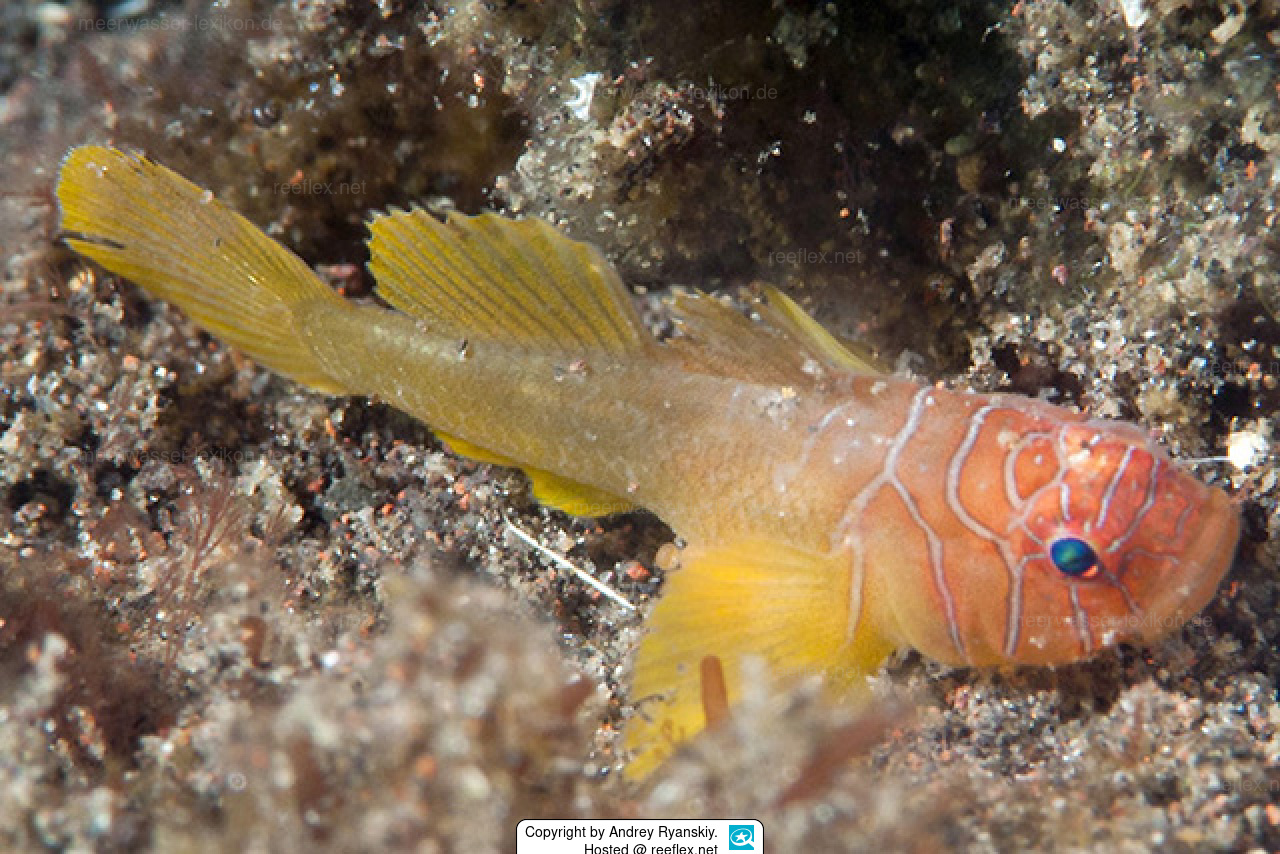Info
Priolepis latifascima is a non-migratory, i.e. site-faithful, goby first identified from Japan and Tawai.
Among the species with "naked neck" (scale-free), Priolepis latifascima is most likely to be confused with Priolepis semidoliatus.
However, Priolepis latifascima has eight dorsal fin rays instead of nine, less scaling on the back, a broader sternal base, and the scale pockets are not outlined.
Priolepis latifascima can be distinguished from Priolepis nuchifasciatus and Priolepis vexilla by the absence of a fraenum.
The species name "latifascima" comes firstly from the Latin word "lati", which means "broad, fasciculate or band", and "ima", which means "end", referring to the last bar on the head, which is wider than the others.
Jumping guard
A jumping guard prevents (nocturnal) fish from jumping out.
Wrasses, blennies, hawkfishs and gobies jump out of an unprotected tank in fright if their night rest is disturbed, unfortunately these jumpers are found dried up in the morning on carpets, glass edges or later behind the tank.
https://www.korallenriff.de/en/article/1925_5_Jump_Protection_Solutions_for_Fish_in_the_Aquarium__5_Net_Covers.html
A small night light also helps, as it provides the fish with a means of orientation in the dark!
Among the species with "naked neck" (scale-free), Priolepis latifascima is most likely to be confused with Priolepis semidoliatus.
However, Priolepis latifascima has eight dorsal fin rays instead of nine, less scaling on the back, a broader sternal base, and the scale pockets are not outlined.
Priolepis latifascima can be distinguished from Priolepis nuchifasciatus and Priolepis vexilla by the absence of a fraenum.
The species name "latifascima" comes firstly from the Latin word "lati", which means "broad, fasciculate or band", and "ima", which means "end", referring to the last bar on the head, which is wider than the others.
Jumping guard
A jumping guard prevents (nocturnal) fish from jumping out.
Wrasses, blennies, hawkfishs and gobies jump out of an unprotected tank in fright if their night rest is disturbed, unfortunately these jumpers are found dried up in the morning on carpets, glass edges or later behind the tank.
https://www.korallenriff.de/en/article/1925_5_Jump_Protection_Solutions_for_Fish_in_the_Aquarium__5_Net_Covers.html
A small night light also helps, as it provides the fish with a means of orientation in the dark!







 Andrey Ryanskiy, Russland
Andrey Ryanskiy, Russland

























